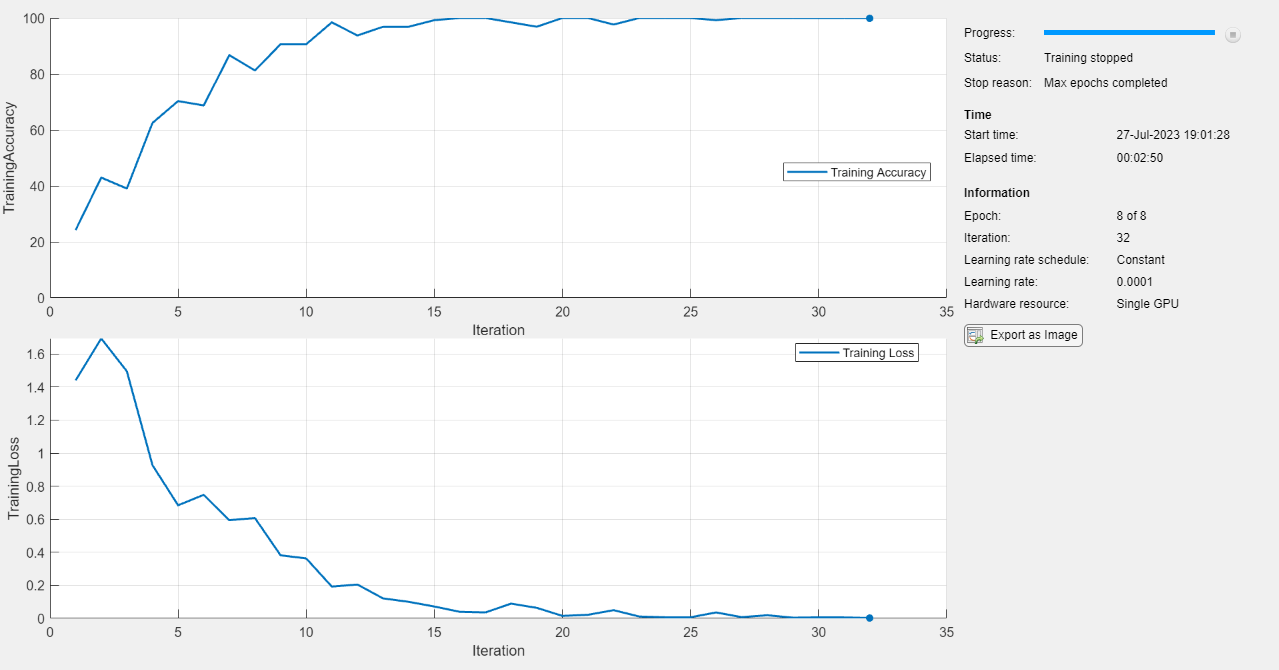trainBERTDocumentClassifier
Syntax
Description
A Bidirectional Encoder Representations from Transformer (BERT) model is a transformer neural network that can be fine-tuned for natural language processing tasks such as document classification and sentiment analysis. The network uses attention layers to analyze text in context and capture long-range dependencies between words.
mdlTrained = trainBERTDocumentClassifier(documents,targets,mdl,options)
mdlTrained = trainBERTDocumentClassifier(tbl,mdl,options)
Examples
Input Arguments
Output Arguments
References
[1] Devlin, Jacob, Ming-Wei Chang, Kenton Lee, and Kristina Toutanova. "BERT: Pre-Training of Deep Bidirectional Transformers for Language Understanding" Preprint, submitted May 24, 2019. https://doi.org/10.48550/arXiv.1810.04805.
[2] Srivastava, Nitish, Geoffrey Hinton, Alex Krizhevsky, Ilya Sutskever, and Ruslan Salakhutdinov. "Dropout: A Simple Way to Prevent Neural Networks from Overfitting." The Journal of Machine Learning Research 15, no. 1 (January 1, 2014): 1929–58
[3] Krizhevsky, Alex, Ilya Sutskever, and Geoffrey E. Hinton. "ImageNet Classification with Deep Convolutional Neural Networks." Communications of the ACM 60, no. 6 (May 24, 2017): 84–90. https://doi.org/10.1145/3065386.
Version History
Introduced in R2023b
See Also
classify | bertDocumentClassifier | bert | dlnetwork (Deep Learning Toolbox) | bertTokenizer
